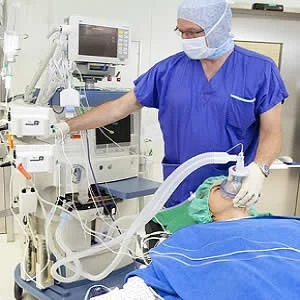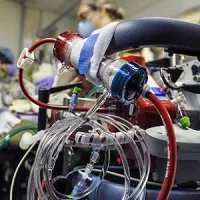New guidelines on prevention of eye injuries during anaesthesia and intensive care have been developed by the French Society for Anaesthesia and Intensive Care Medicine (SFAR), together with the French Ophthalmology Society and the French-speaking Intensive Care Society. The document, published in the journal Anaesthesia, Critical Care & Pain Medicine (ACCPM), is intended to provide much needed advice to the busy clinicians who take care of sedated and unconscious patients.
The guidelines were formulated by a multidisciplinary team of anaesthetists, critical care physicians, and ophthalmologists, using the Grading of Recommendations Assessment, Development, and Evaluation (GRADE) framework, a commonly used system to rate the scientific quality of evidence and strength of recommendations.
"The GRADE framework is particularly useful to guide clinical decision-making in the many areas of clinical care where randomised controlled trials and meta-analyses are lacking. While allowing expert opinion when scientific data is insufficient, GRADE clearly summarises the quality of evidence upon which the clinical recommendation is based," explains Karen B. Domino, MD, MPH, professor and vice chair for clinical research, Department of Anaesthesiology & Pain Medicine, University of Washington School of Medicine (Seattle) in an accompanying editorial.
The SFAR guidelines, as Dr. Domino notes, "bridge an important gap" in that they are the only published methodologically sound guidelines on the prevention of corneal injuries during anaesthesia and critical care. They also provide clinical guidance to prevent visual loss due to central retinal artery occlusion (CRAO) and ischaemic optic neuropathy (ION).
Some of the recommendations included in the SFAR document are:
- complete occlusion of the eyelids with adhesive strips during general anaesthesia, beginning after the ciliary reflex is lost and before endotracheal intubation
- use of aqueous lubricants for at-risk head/neck surgeries or during procedures in the lateral or prone position
- use of an aqueous gel or humidity chambers (instead of artificial tears) in intubated and mechanically ventilated patients in the intensive care unit
The SFAR guidelines also provide guidance on prevention of vascular eye injuries. While rare, CRAO and ION are devastating complications that result in visual loss and/or blindness, according to Dr. Domino. CRAO after prone spine surgery is very rare, usually unilateral, and associated with facial trauma and/or pressure on the globe.
The SFAR guidelines to prevent CRAO recommend avoiding direct compression of the eyeball in spine procedures, by using head frames such as Mayfield pins or a specially cut cushion, and frequent checking of the eyes.
In contrast, ION is often bilateral and associated with systemic factors. The SFAR guidelines for prevention of ION in prone spine surgery recommend the patient’s head be elevated with prone
positioning and that hypotension, severe anaemia, and hypovolaemia be reduced in at-risk patients (e.g., obese, male, hypertensive, and vascular risk factors).
Source: Anaesthesia, Critical Care & Pain Medicine
Image Credit: Pixabay
References:
French Society for Anaesthesia and Intensive Care (SFAR)French Ophthalmology Society (SFO), French-speaking Intensive Care Society (SRLF)Hawa Keita,Jean-Michel Devys,Jacques Ripart,Marie Frost,Isabelle C ochereaue, FrédériqueBoutin, Claude Guérin, Dominique Fletcher,Vincent Compèr.(2017) Eye protection in anaesthesia and intensive care. Anaesthesia Critical Care & Pain Medicine. doi.org/10.1016/j.accpm.2017.08.001
Latest Articles
anaesthesia, intensive care, Eye protection
New guidelines on prevention of eye injuries during anaesthesia and intensive care have been developed by the French Society for Anaesthesia and Intensive Care Medicine (SFAR), together with the French Ophthalmology Society and the French-speaking Intensi










